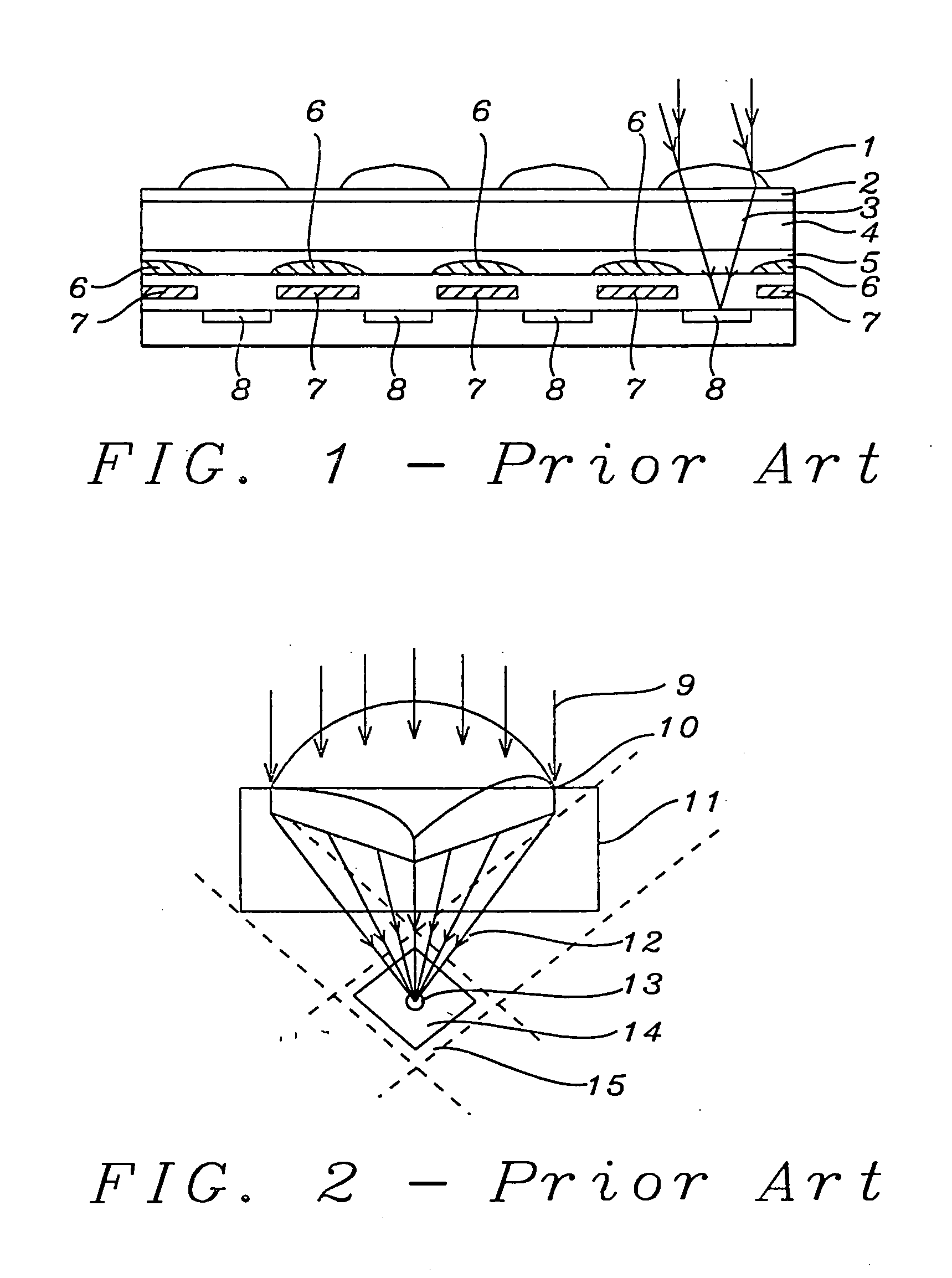Colors only process to reduce package yield loss
a technology of package yield and color, applied in the direction of optics, radio frequency control devices, instruments, etc., can solve the problems of large and costly systems, inferior spatial resolution, and significant improvement in size and cos
- Summary
- Abstract
- Description
- Claims
- Application Information
AI Technical Summary
Benefits of technology
Problems solved by technology
Method used
Image
Examples
Embodiment Construction
[0049] The present invention discloses a significantly simplified fabrication sequence and the specific optical conditions and materials' properties to be satisfied in forming a planar film layer of high transmittance material over at least one layer of color filters to enable high efficiency integrated semiconductor array color imaging devices without microlenses.
[0050]FIG. 5A and FIG. 5B depicts the simplified comparative fabrication flow-charts of the new process of the present invention which distinguish it from the sequence of the Prior Art process. In accord with the flow-charts shown, the manufacturing method of the present invention teaches priority formation of a high transmittance planarizing layer directly above a color filter layer residing above the sensor elements of the matrix array comprising the semiconductor imager. In the Prior Art process exhibited in FIG. 5A option 1 deposits planarization layer 47 prior to color filter formation 48. In FIG. 5A option 2 elimina...
PUM
| Property | Measurement | Unit |
|---|---|---|
| index of refraction | aaaaa | aaaaa |
| color | aaaaa | aaaaa |
| area | aaaaa | aaaaa |
Abstract
Description
Claims
Application Information
 Login to View More
Login to View More - R&D
- Intellectual Property
- Life Sciences
- Materials
- Tech Scout
- Unparalleled Data Quality
- Higher Quality Content
- 60% Fewer Hallucinations
Browse by: Latest US Patents, China's latest patents, Technical Efficacy Thesaurus, Application Domain, Technology Topic, Popular Technical Reports.
© 2025 PatSnap. All rights reserved.Legal|Privacy policy|Modern Slavery Act Transparency Statement|Sitemap|About US| Contact US: help@patsnap.com



